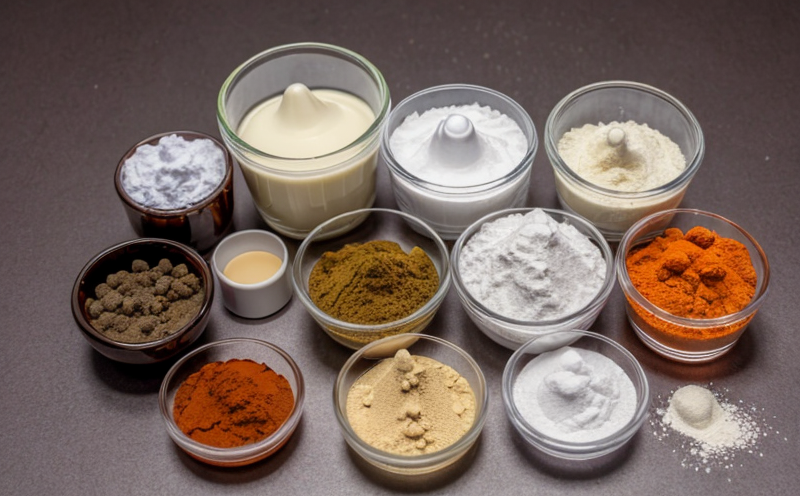Water Activity Testing
Water activity (aw) testing is a critical analytical method used in the pharmaceutical sector to assess the moisture content and stability of excipients, formulation ingredients, and final drug products. This test is essential for ensuring product quality, shelf life, and safety. Water activity affects various physical and chemical properties of substances, including microbial growth, crystallization, and solubility. In the context of pharmaceuticals, understanding aw can prevent adverse effects on efficacy and stability.
Water activity testing involves measuring the ratio of water vapor pressure to the vapor pressure of pure water at a given temperature. This measurement provides insights into the availability of free water molecules that can interact with other components in a formulation or product matrix. The range of water activity is between 0.0 and 1.0, where an aw value closer to 1 indicates more available water for chemical reactions.
The pharmaceutical industry relies heavily on accurate water activity testing because it influences the performance and safety of excipients used in formulations. Excipients are crucial components that facilitate drug delivery and enhance product stability. For instance, sodium chloride (NaCl) has a low aw value due to its high affinity for water, while sugars like sucrose have an intermediate aw range. The choice of excipient can significantly impact the overall aw profile of a formulation.
Compliance with international standards such as ISO 12234, which specifies methods for determining water activity in foods, pharmaceuticals, and other products, is essential. Pharmaceutical manufacturers must ensure their testing aligns with these standards to guarantee consistency and reliability across different batches and locations.
Water activity testing can be performed using various techniques including the DPH method, which involves measuring the dew point temperature of a sample. Another common approach is the use of a water activity meter, which directly measures aw through electrical conductivity or capacitance. These instruments are calibrated regularly to maintain accuracy and precision.
The significance of water activity testing extends beyond excipients to encompass all ingredients involved in drug formulations. By understanding the aw of each component, manufacturers can optimize blending processes, control moisture levels during production, and predict potential stability issues. This knowledge is vital for ensuring that products remain effective throughout their shelf life under various storage conditions.
Moreover, water activity testing supports regulatory compliance by providing data needed to meet stringent quality standards set forth by agencies like the FDA. Compliance officers can use this information to verify that excipients comply with specified limits or guidelines. The ability to measure aw accurately also aids in the development of robust quality assurance programs, thereby enhancing overall product safety.
In summary, water activity testing plays a pivotal role in pharmaceutical manufacturing by ensuring consistent quality and stability of excipients and formulations. Through precise measurements and adherence to international standards, manufacturers can uphold high-quality standards while meeting regulatory requirements.
Applied Standards
The primary standard applicable to water activity testing in the pharmaceutical sector is ISO 12234:2015. This document provides comprehensive guidance on determining water activity and offers methodologies for various sample types, including solid, liquid, semi-solid, and gas-phase materials.
- ISO 12234-1: General principles
- ISO 12234-2: Water activity determination of liquids
- ISO 12234-3: Water activity determination of solid samples
- ISO 12234-4: Water activity determination of gaseous samples
The standard emphasizes the importance of proper sample preparation, instrument calibration, and environmental conditions to ensure accurate readings. Compliance with these guidelines ensures that water activity measurements are reliable and reproducible.
Scope and Methodology
| Aspect | Description |
|---|---|
| Samples | Including excipients, pharmaceuticals, and final formulations |
| Equipment | Water activity meters calibrated to ±0.01 aw |
| Environmental Conditions | Temperature controlled at 25°C ± 1°C, relative humidity below 30% |
| Preparation Steps | Careful handling to avoid contamination; equilibration time of 6 hours |
| Data Analysis | Average aw values calculated from multiple replicate measurements |
The testing process begins with selecting representative samples that are free from external contaminants. Samples should be prepared according to the specifications outlined in ISO 12234, ensuring they represent the intended product matrix accurately.
Water activity meters used for this purpose must meet stringent calibration requirements to ensure accurate readings. Calibration typically involves comparing instrument measurements against known reference values under controlled conditions. Once calibrated, samples are placed into the meter according to prescribed procedures. Equilibration times vary depending on sample type but generally range from 24 hours to several days.
Data analysis involves calculating average aw values based on multiple replicate measurements taken over specified intervals. These averages provide a robust representation of the water activity within the sample, which is crucial for interpretation and decision-making. Compliance officers can use these data points to verify adherence to established limits or guidelines.
Use Cases and Application Examples
- Excipient Selection: Determining the water activity of excipients helps in selecting those that minimize microbial growth and enhance product stability.
- Formulation Development: Understanding aw allows for optimization of blending processes to achieve desired moisture levels.
- Manufacturing Control: Real-time monitoring ensures consistent quality during production runs.
- Storage Stability: Predicting how changes in environmental conditions might affect product stability.
- Labeling Compliance: Providing accurate information about the water activity content on labels helps consumers make informed decisions.
- Regulatory Reporting: Supporting documentation required for regulatory submissions to ensure compliance with international standards.
Water activity testing is not limited to excipients but extends across various components of pharmaceutical formulations. By incorporating aw into routine quality control procedures, manufacturers can enhance product safety and efficacy while ensuring adherence to regulatory requirements.





